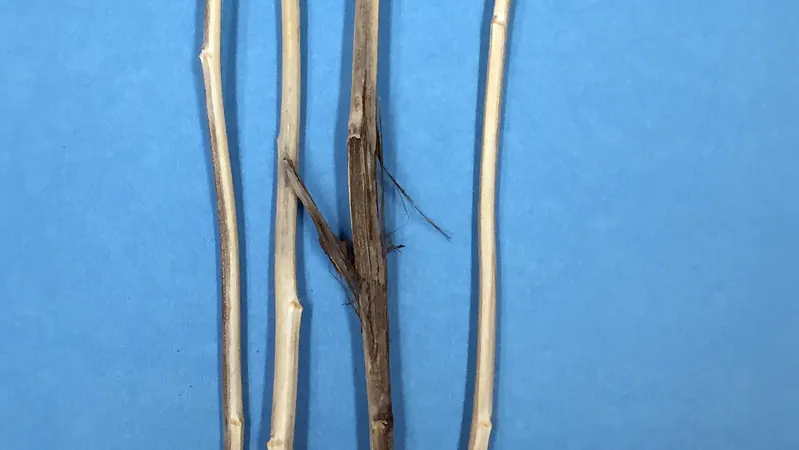
Shocking Discovery: How Soil pH Could Spell Disaster for Canadian Canola Crops!
2024-10-28
Author: Sarah
Introduction
Recent research from the University of Alberta has unveiled a startling connection between soil pH levels and the growth of a destructive fungus wreaking havoc on canola crops in Western Canada. This groundbreaking study reveals that Verticillium longisporum, the fungus responsible for the harmful Verticillium stripe disease, thrives under neutral to alkaline soil conditions, highlighting an urgent need for canola farmers to monitor and manage soil pH effectively.
Background
Originally identified in Manitoba in 2014, V. longisporum has since spread to various provinces, including Alberta, Saskatchewan, British Columbia, Ontario, and Quebec. This fungal menace has caused alarming yield losses, with farmers experiencing a decline of 10 to a staggering 50 percent in production. Such losses threaten not just individual farms but also the entire canola industry, vital to Canada's agricultural economy.
Key Findings
The key findings of the study, published in the journal Horticulturae, indicate that incidence and severity of the disease peak at soil pH levels around 7.8. In laboratory studies, colonies of the fungus exhibited a 16% increase in growth at pH levels of 7.4 and 8.6 compared to the lower pH level of 5.5. This suggests that farmers might be unknowingly cultivating conditions conducive to this pathogen's outbreak, particularly in areas known for more alkaline soils.
Researcher Insights
Rebecca Wang, the study's lead researcher, emphasized the significance of understanding local soil conditions. "Our study provides a crucial insight that can help farmers identify areas at higher risk for Verticillium stripe and underscores the importance of monitoring soil pH for prevention." This could be a game-changer for producers looking to safeguard their crops.
Geographical Impact
Moreover, the findings may illuminate why this disease is more rampant in Manitoba, which has higher alkaline levels compared to Alberta and Saskatchewan. With the fungus damaging plant tissues and impairing the uptake of vital water and nutrients, canola plants become weakened and more susceptible to other diseases.
Agricultural Practices
Farmers in regions where Verticillium stripe poses a threat face a double-edged sword. While liming soils is a common strategy to combat clubroot disease—which prefers acidic conditions—it can inadvertently exacerbate the severity of Verticillium stripe. Wang and her colleagues advocate for a more nuanced approach to soil treatment and land management to mitigate the risks associated with both diseases.
Recommendations
To combat this emerging threat, the researchers recommend integrating practices such as scouting for disease signs, sanitizing equipment, and extending crop rotations to disrupt the lifecycle of both the fungus and any associated pests. Future research aims to further explore the pH sensitivity of a broader range of V. longisporum strains and assess the applicability of these findings in real-world agricultural settings.
Conclusion
For canola producers, the message is clear: vigilance regarding soil pH could be the very key to protecting their harvests from one of the most dangerous fungal pathogens in the region. As this research emerges, farmers must adapt their practices to ensure the sustainability and productivity of their canola crops in the face of these growing threats.


 Brasil (PT)
Brasil (PT)
 Canada (EN)
Canada (EN)
 Chile (ES)
Chile (ES)
 España (ES)
España (ES)
 France (FR)
France (FR)
 Hong Kong (EN)
Hong Kong (EN)
 Italia (IT)
Italia (IT)
 日本 (JA)
日本 (JA)
 Magyarország (HU)
Magyarország (HU)
 Norge (NO)
Norge (NO)
 Polska (PL)
Polska (PL)
 Schweiz (DE)
Schweiz (DE)
 Singapore (EN)
Singapore (EN)
 Sverige (SV)
Sverige (SV)
 Suomi (FI)
Suomi (FI)
 Türkiye (TR)
Türkiye (TR)